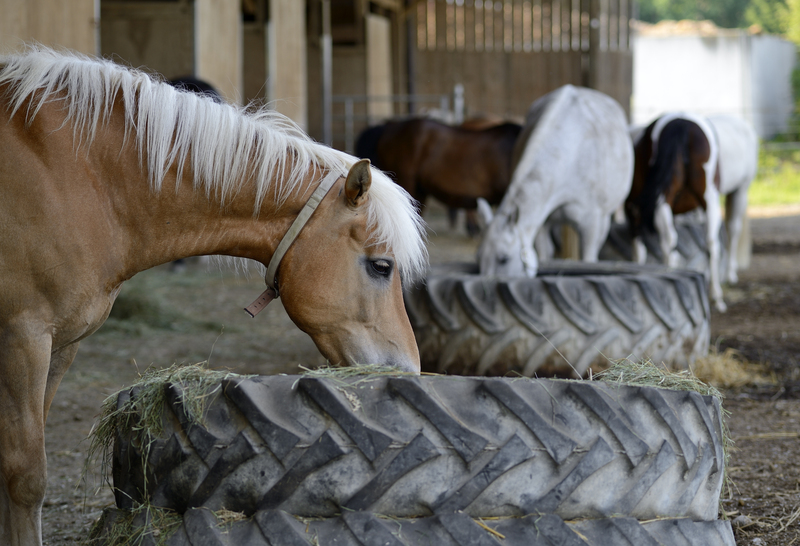The Safe and Responsible Way to Get Rid of PPE Waste
The COVID-19 pandemic has transformed the way we live and work, ushering in an era where personal protective equipment (PPE) became a part of our everyday existence. Whether it's disposable masks, gloves, gowns, or face shields, PPE has played a crucial role in safeguarding individual and public health. However, with their widespread use has come a significant challenge: the safe and responsible disposal of PPE waste. With increasing concerns about environmental pollution and public safety, it's more important than ever to understand how to get rid of PPE waste in a sustainable, responsible, and eco-friendly manner.
Why Is Proper Disposal of PPE Waste Important?
Improper disposal of PPE waste, such as tossing masks and gloves on the ground or in general waste bins, poses serious risks. These risks are not just restricted to potential viral transmission, but also have far-reaching environmental and ecological consequences.
- Health Risks: Discarded PPE can carry pathogens and result in contamination, threatening sanitation workers and the general public.
- Environmental Hazards: PPE is primarily made of non-biodegradable materials such as plastics. When these make their way to landfills or natural habitats, they can significantly pollute the environment and harm wildlife.
- Litter and Community Aesthetics: Streets and park littered with discarded masks and gloves detract from community cleanliness and can foster negative public perceptions and health concerns.
Understanding these hazards underscores the need for dedicated strategies for the correct disposal of PPE and the importance of adopting sustainable systems for all levels of waste management.

Types of PPE Waste: What Needs Special Handling?
- Single-use Face Masks: Often made of polypropylene, designed for one-time use.
- Disposable Gloves: Latex, nitrile or vinyl gloves used in healthcare, labs, or public spaces.
- Protective Gowns and Aprons: Used widely in medical and laboratory environments.
- Face Shields and Goggles: Made of plastic, offering eye or full-face protection.
- Respirators (e.g., N95 masks): Advanced filtering masks used in high-risk settings.
Each category may require slightly different disposal procedures depending on local regulations and potential contamination levels.
General Guidelines for PPE Waste Disposal
Adhering to the best practices for PPE waste management is crucial whether you are an individual, business, or healthcare facility. Let's delve into the right steps to follow.
Step-by-Step Guide: How to Dispose of PPE Waste Safely
1. Do Not Recycle Contaminated PPE
It's vital to remember that used PPE such as masks and gloves should not go into your standard recycling bin. Most recycling facilities cannot process these items, and contaminated PPE can disrupt the recycling stream and endanger workers. Instead, these should be treated as a unique waste category.
2. Segregate PPE Waste from General Garbage
- Designate a separate, clearly-marked bin for PPE waste in your household, workplace, or organization.
- Opt for bins with lids to prevent accidental exposure and contact with the contents.
- Line bins with a strong, leak-proof plastic bag to further contain potential contamination.
3. Proper PPE Handling Before Disposal
- Remove PPE using the correct technique to avoid touching the surfaces that were exposed.
- If disposing of PPE after contact with a confirmed or suspected infectious individual, double-bagging is recommended to ensure additional containment.
- Immediately wash your hands thoroughly with soap and water or use a hand sanitizer after handling used PPE.
4. Securely Seal and Dispose of the Bag
Once your PPE waste bag is about three-quarters full, securely tie it to avoid leaks or bursts. If your local municipality provides dedicated pick-up for medical or PPE waste, follow their instructions. If not, place the sealed bag in your general waste bin, ensuring it cannot be accessed by children, pets, or wildlife.
5. Follow Local Guidelines for Medical and PPE Waste
Check with your local waste management authorities for specific protocols relating to PPE and potentially infectious waste. Some municipalities offer special collection services, drop-off points for hazardous materials, or issue guidelines for home and business settings. Abiding by these local instructions is critical to ensure responsible handling at every stage.
PPE Waste Disposal in Different Settings
Healthcare Facilities
Hospitals, clinics, and care homes generate large volumes of PPE waste. Their disposal protocols must comply with strict regulations:
- PPE waste must be treated as biohazardous or infectious waste.
- Use color-coded bins and bags as stipulated by national regulations (often yellow or red for infectious material).
- Bins should be clearly labeled, foot-operated (if possible), and lined with appropriately thick bags.
- Staff must receive regular training on PPE removal, segregation, and bin usage.
- Waste is typically collected and incinerated or treated before landfill disposal to neutralize pathogens.
Business and Educational Institutions
Many offices, factories, and schools have adopted PPE protocols during public health outbreaks. These establishments should:
- Place PPE bins at strategic locations--entrances, exits, washrooms, and canteens.
- Ensure janitorial or waste crews are equipped with personal protection when handling waste bins.
- Establish routines to regularly empty and disinfect waste collection points.
- Educate employees and students about safe PPE use, removal, and disposal through signage and training sessions.
Public Spaces and Households
Outside professional environments, safe PPE waste disposal is a community responsibility.
- Carry a small, sealable bag to hold used masks or gloves until you find a proper waste bin.
- Never litter--discarded PPE can quickly enter stormwater systems and waterways, leading to environmental damage and potential blockages.
- Encourage family members and children to understand and practice responsible PPE waste habits.
Environmental Considerations of PPE Waste
The surge in one-time-use PPE products has contributed to an alarming rise in plastic waste globally. Single-use masks and gloves can persist in the environment for hundreds of years, fragmenting into microplastics that contaminate rivers, soil, and oceans. Wildlife are especially at risk, as they can ingest or become entangled in discarded PPE.
- Microplastics: Degradation of PPE waste in the environment leads to microplastic pollution, which is harder to contain and cleanup.
- Harm to Animal Life: Animals often mistake PPE, especially gloves and mask straps, for food, leading to digestive blockages, injury, or death.
- Increase in Landfill Burden: The sharp increase in single-use plastics, including PPE, adds pressure to manage limited landfill space.
Thus, it is vital to reduce the environmental impact by adopting eco-friendly PPE waste solutions whenever possible.
Innovative and Responsible Disposal Methods
While the vast majority of disposable PPE is designed for single-use, a number of innovations and responsible approaches are emerging to reduce environmental impact:
- Dedicated PPE Waste Bins and Collection Services: Companies are providing bins specifically for masks and gloves, often accompanied by partnerships with specialized waste processing companies.
- PPE Recycling Initiatives: Some projects are developing techniques to recycle single-use PPE into materials for construction, road surfacing, or even new protective gear. However, check locally as these services are not yet widespread.
- Biodegradable PPE: Research is underway into masks and gloves made from renewable, biodegradable materials, offering hope for reduced long-term pollution.
- Upcycling and Repurposing: Creative initiatives are converting PPE waste into art, reusable containers, or industrial products.
How to Reduce PPE Waste: Beyond Disposal
The best way to address the PPE waste crisis is not only through safe disposal, but by reducing the volume generated in the first place. Consider the following strategies:
1. Switch to Reusable PPE When Possible
Non-medical settings can often use reusable cloth masks and washable PPE, reducing single-use items dramatically. Always wash reusable masks and gear according to manufacturer guidelines and only use them if they meet safety standards for the risk level involved.
2. Invest in High-Quality, Durable Equipment
Some professions require more robust PPE. By investing in higher quality products intended for multiple uses, businesses and individuals minimize the frequency of disposal and reduce environmental impact.
3. Educate and Advocate
Awareness is a powerful tool. Sharing accurate, up-to-date information with coworkers, family, and your community encourages more people to follow safe and responsible PPE waste disposal methods. By advocating for better waste management infrastructure and supporting local or global environmental initiatives, everyone can be part of the solution.
Regulations and Guidelines for PPE Waste Disposal
Global and National Standards
Most nations have developed clear guidelines for managing PPE waste, especially during outbreaks of infectious diseases:
- World Health Organization (WHO): Recommends that potentially infectious PPE be collected in properly marked containers and treated as hazardous health-care waste.
- Centers for Disease Control and Prevention (CDC): Instructs that contaminated PPE should not be reused or recycled, and must be disposed of using regulated medical waste protocols.
- Local Governments: Often provide special guidance on handling non-medical PPE for businesses, schools, and the general public.
Failing to follow these regulations can result in both health dangers and legal infractions.
Special Considerations During Pandemics
During health emergencies, rules may be updated to reflect increased risks. Many municipalities set up temporary collection points for PPE waste or provide new instructions for disposal, quarantine periods for waste storage, and protective gear for waste collectors. It's important to stay informed of current local and international guidelines, as they can change rapidly during crises.

Frequently Asked Questions on PPE Waste Disposal
- Can I put used masks or gloves in the recycling bin?
No. Used PPE should be disposed of as general or hazardous waste, never in recycling bins, as it can contaminate other recyclables and pose risks to recycling workers. - Is it necessary to double-bag PPE waste?
For households (outside of caring for infected individuals), single bagging is adequate if you securely tie your bags. In medical or high-risk environments, double bagging is strongly recommended. - What do I do if local PPE-specific disposal services are unavailable?
Place used PPE in a tied plastic bag and dispose of it in your general household waste, never as recyclable material or compost. - Are there penalties for improper PPE disposal?
Many municipalities have fines for littering PPE or violating medical waste disposal regulations. Additionally, improper disposal can have long-lasting social and environmental effects.
Conclusion: Our Shared Responsibility
The safe and responsible way to get rid of PPE waste is not only a matter of individual hygiene but a broader commitment to public health and environmental stewardship. By understanding the hazards of improper PPE waste disposal, following best practices, and seeking to reduce usage where possible, we can protect ourselves, our communities, and our planet.
Whether you are an individual at home, part of a business, or a healthcare professional, you play a crucial role in ensuring safe PPE waste disposal. Stay informed about local collection services, educate your peers, and consider supporting initiatives that seek innovative solutions to the PER waste crisis. By working together and making informed decisions, we contribute to a safer, greener future for all.
- Dispose of all PPE properly
- Never recycle contaminated PPE
- Support or initiate responsible PPE waste programs in your area
Together, let's champion safe PPE disposal practices and set a lasting example for future generations.
```